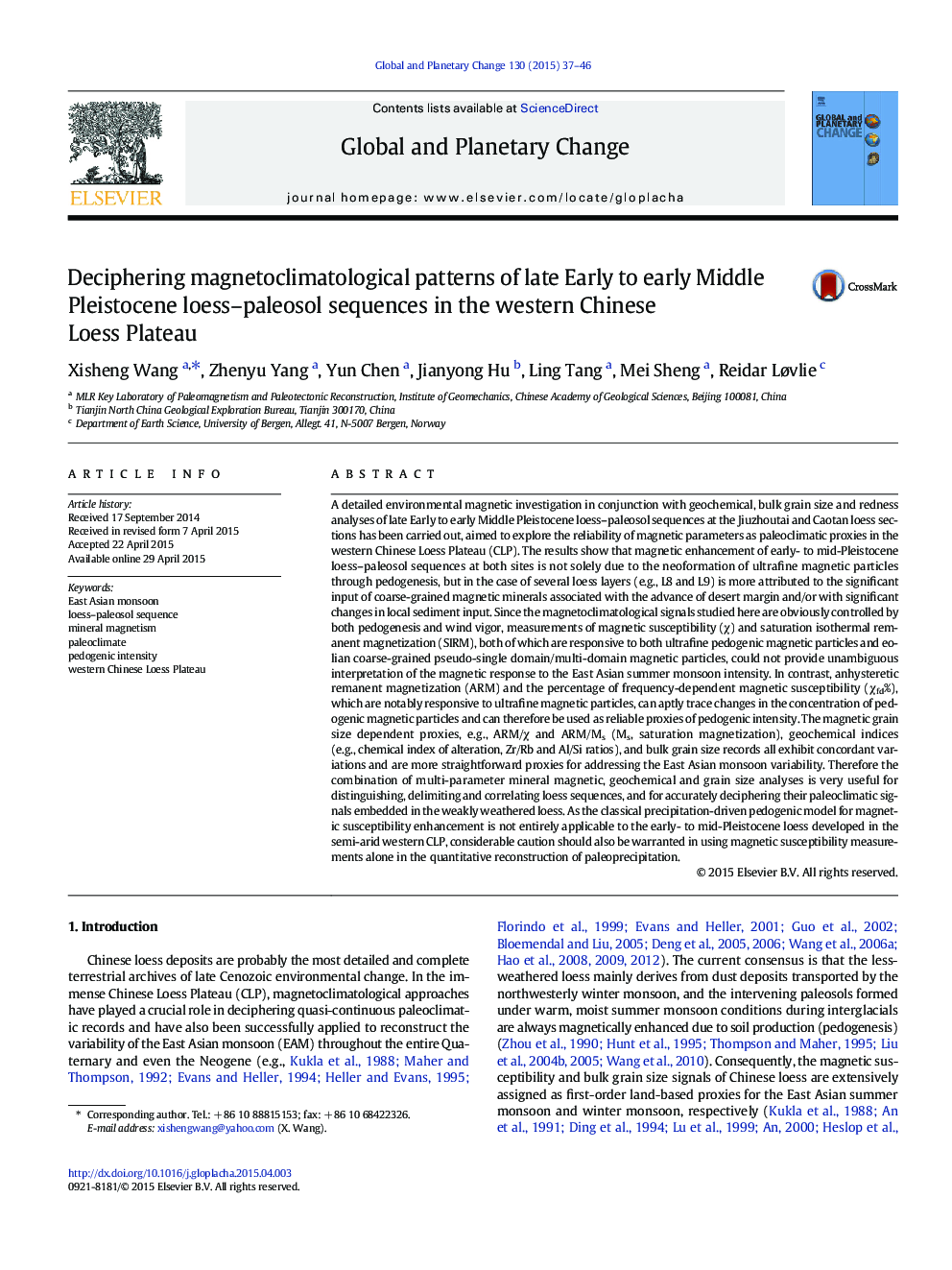| کد مقاله | کد نشریه | سال انتشار | مقاله انگلیسی | نسخه تمام متن |
|---|---|---|---|---|
| 4463359 | 1621652 | 2015 | 10 صفحه PDF | دانلود رایگان |
• Magnetic signals of early-to-mid Pleistocene loess in the western CLP are controlled by both pedogenesis and wind vigor.
• χ is a less than reliable proxy of the East Asian summer monsoon in the western CLP.
• ARM and χfd% can be employed as faithful proxies of pedogenic intensity in the western CLP.
• ARM/Ms can be adopted as a reliable proxy for detecting variations in magnetic grain size.
• χ-based estimates of paleoprecipitation in the western CLP should be treated with considerable caution.
A detailed environmental magnetic investigation in conjunction with geochemical, bulk grain size and redness analyses of late Early to early Middle Pleistocene loess–paleosol sequences at the Jiuzhoutai and Caotan loess sections has been carried out, aimed to explore the reliability of magnetic parameters as paleoclimatic proxies in the western Chinese Loess Plateau (CLP). The results show that magnetic enhancement of early- to mid-Pleistocene loess–paleosol sequences at both sites is not solely due to the neoformation of ultrafine magnetic particles through pedogenesis, but in the case of several loess layers (e.g., L8 and L9) is more attributed to the significant input of coarse-grained magnetic minerals associated with the advance of desert margin and/or with significant changes in local sediment input. Since the magnetoclimatological signals studied here are obviously controlled by both pedogenesis and wind vigor, measurements of magnetic susceptibility (χ) and saturation isothermal remanent magnetization (SIRM), both of which are responsive to both ultrafine pedogenic magnetic particles and eolian coarse-grained pseudo-single domain/multi-domain magnetic particles, could not provide unambiguous interpretation of the magnetic response to the East Asian summer monsoon intensity. In contrast, anhysteretic remanent magnetization (ARM) and the percentage of frequency-dependent magnetic susceptibility (χfd%), which are notably responsive to ultrafine magnetic particles, can aptly trace changes in the concentration of pedogenic magnetic particles and can therefore be used as reliable proxies of pedogenic intensity. The magnetic grain size dependent proxies, e.g., ARM/χ and ARM/Ms (Ms, saturation magnetization), geochemical indices (e.g., chemical index of alteration, Zr/Rb and Al/Si ratios), and bulk grain size records all exhibit concordant variations and are more straightforward proxies for addressing the East Asian monsoon variability. Therefore the combination of multi-parameter mineral magnetic, geochemical and grain size analyses is very useful for distinguishing, delimiting and correlating loess sequences, and for accurately deciphering their paleoclimatic signals embedded in the weakly weathered loess. As the classical precipitation-driven pedogenic model for magnetic susceptibility enhancement is not entirely applicable to the early- to mid-Pleistocene loess developed in the semi-arid western CLP, considerable caution should also be warranted in using magnetic susceptibility measurements alone in the quantitative reconstruction of paleoprecipitation.
Journal: Global and Planetary Change - Volume 130, July 2015, Pages 37–46
